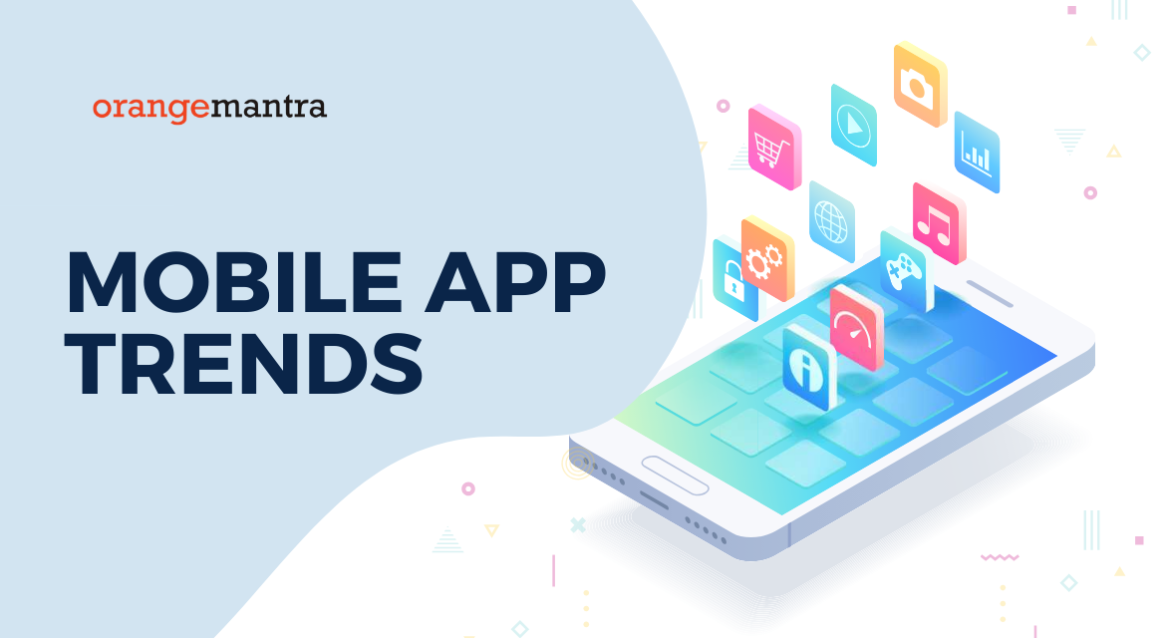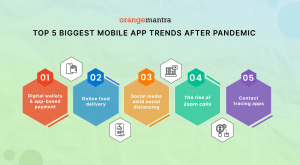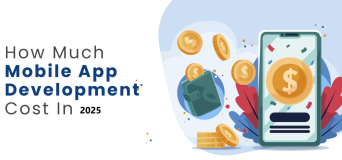The strangest year of the century is coming to an end. 2023 left us dependent on Mobile App Trends more than ever. From online food delivery to contact tracing and digital payments to fitness sessions, everything happened via apps. The pandemic, thus, forced us to believe that almost anything is doable from home — using mobile apps. And in doing so, it helped create some unprecedented digital trends driven by mobile apps.
As we fast-forwarded digital transformation to many years, apps played the most crucial role in reshaping the pandemic-altered world. Demands for mobile app development company in India started to surge early in the crisis as countries began to impose restriction measures. Mobile apps were becoming mainstream across industries even before the pandemic hit. But with physical markets shutting down and the fear of the virus spreading, apps became central to everything related to our day-to-day activities.
Below are some of the most prominent trends driven by mobile apps throughout the pandemic. These Mobile App Trends are already transforming the way we live, shop, and communicate. And consumer behavior experts believe that the pace of evolution in these digital transformation solutions is likely to continue even after the health crisis is over. Check out the trends.
2024’s Biggest Mobile App Trends
Digital wallets & app-based payment
Most businesses around the world switched to digital as the preferred payment mode. It was driven partly by consumers’ fear of contracting the virus and the rise in online shopping for all kinds of products and services. Besides, digital payment solutions led the tech trends growing in response to the pandemic. For instance, QR codes and RFID-enabled apps became widespread across small, medium, and large enterprises alike.
Government agencies and international organizations like the W.H.O, have repeatedly encouraged people to prefer digital payment modes. Such endorsement, too, contributed significantly to making app-based payments norm across developed and emerging markets alike. For instance, in India, the usage of digital wallets like PayTm, Google Pay, and Amazon Pay soared throughout market domains.
Online food delivery
The coronavirus forced restaurants around the world to shut down. Online food delivery became the savior — both for restaurateurs and consumers alike. Online food delivery apps worldwide reported record-setting growth during the pandemic. Be it Zomato in India or DoorDash in the U.S., on-demand food delivery apps everywhere saw an unprecedented surge in usage. DoorDash’s recent initial public offering (IPO) is a testament to its growth.
Apps like Zomato and DoorDash provide a platform that connects restaurants with delivery professionals and customers to enable takeout orders. As more and more restaurant-goers shifted away from dining in restaurants to eating at home, these apps provided the right solution at the right time.
Contact tracing apps
If you happen to live in India, you must have heard about (or used) the “Aarogya Setu” app. Digital contact tracing apps like this started to become popular among government agencies early in the pandemic. Epidemiologists and health experts believe that these apps helped dramatically lower the transmission in several countries. For instance, Singapore was able to slow down the spread using its now-popular contact tracing app TraceTogether.
Singapore was the first country to launch a digital contact tracing app. India, too, was one of the earliest adopters of a contact tracing app. Several other countries later picked up Singapore’s contact tracing app TraceTogether. It allows government agencies to track community transmission by monitoring people’s movement.
The rise of Zoom calls
Zoom calls have defined the pandemic for the tech industry and the corporate world in general. As most of the world’s workforce shifted to remote work, technology became more crucial than ever for small and large companies alike. In addition to a gazillion other Work From Home solutions, video calling apps like Zoom rose to prominence as never before. From daily team huddles to international business conferences, everything happened on Zoom in 2020.
And these trends are now uniform across industries — from software development to education and from media to healthcare. Technology analysts say the new digital culture induced by the pandemic will continue to dictate how we work and live even in the post-COVID world.
Social media amid social distancing
As stay-at-home orders and lockdowns forced people to spend more time indoors, the usage of social media apps grew staggeringly. Communication via social media platforms also gave people a kind of antidote to isolation caused by the pandemic. Social media companies responded to this surge in use promptly.
Facebook and Instagram started new features. For instance, Facebook launched Facebook Shops for small businesses. It enables small business owners to sell products from anywhere using Facebook’s platform. Social media has become a more integral part of online commerce over the past couple of months. Businesses are using social media as part of their m-Commerce solutions to grow in the online space.
Rounding off
The pandemic accelerated digital trends worldwide. And Mobile App Trends consistently remained the most dominant and go-to solutions throughout the year. These trends, combined with others, helped tech start-ups to report remarkable growth by the end of the year. The pandemic enabled app makers and tech-driven companies to redefine business growth. Meanwhile, on the other side of the story, these digital technologies helped consumers wade through challenging times.
At OrangeMantra, a digital transformation solutions provider, we have helped numerous businesses seamlessly cope with the pandemic-altered world. Our enterprise solutions and custom mobile apps have helped hundreds of clients to solve intricate business problems and foster growth.
FAQs
Q. How do I make an enterprise app?
If you are a business owner or an entrepreneur, the best way to create an enterprise mobile app is to hire an app development company or a dedicated app developer for your project. OrangeMantra offers industry-best app development services at a competitive price.
Q. How much does it cost to build an enterprise mobile app?
The costs of developing an enterprise mobile app depend on several factors. Design complexity, development time, type of features, etc. play a vital role in calculating the costs. Hire mobile app developers from OrangeMantra to build on-demand food delivery apps at competitive prices, without compromising with quality.
Q. What does remote work mean?
Remote work, or work from home (WFH), is a working style that allows professionals to work outside of a traditional office setting. It is based on the concept that work does not need to be done in a specific physical location to be executed successfully.
























